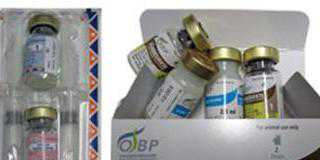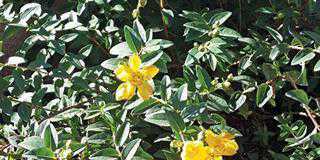Osteoarthritis of the fetlock and coffin joints is known as ringbone. If it affects the hocks it’s called bone spavin. Although osteoarthritis is common in both people and horses, it’s still not very well understood. Signs of the disease have even been found in skeletons of ancient Egyptian mummies.
What is known, though, is that it’s more likely to occur after an injury or repeated strain on a joint.
How does osteoarthritis develop?
The basic structure of all joints is the same. Cartilage covers the end of the bones that make up the joint. This protects the bone. A joint capsule surrounds the joint and joint fluid lubricates and feeds the cartilage within the joint capsule. The cartilage has no blood or nerve supply, and if it’s damaged, there will be no pain. Badly damaged cartilage will not re-grow and the unprotected bones start to grate against each other resulting in “creaky” joints.
Substances called proteoglycans then start to leak into the joint fluid, causing an inflammation known as synovitis.The loss of proteoglycans and collagen from the cartilage causes it to weaken and disintegrate further. All joints are stabilised by collateral ligaments which attach to the joint capsule and the periosteum, a thin membrane surrounding the bones on each side of the joint.
The joint capsule has a synovial membrane with a blood and a nerve supply. Damage to the joint, either through a sudden accident or repeated strain, can tear the periosteum where it attaches to the ligaments or joint capsule.
Certain types of conformation put more strain on the ligaments and joint capsule, leading to osteoarthritis. For example, very upright pasterns and a straight shoulder result in more concussion to the joints below the fetlock and are likely to result in ringbone. A young racehorse that’s “back at the knee” will overextend the knee joint when galloping and develop osteoarthritis in the knee bones. Splints is also a type of osteoarthritis that develops between the cannon and splint bones due to crooked legs.
Symptoms
Pain is only felt when the synovial membrane and the joint capsule are damaged. This is often seen as lameness and the joint feels warmer due to inflammation. But once the bony changes have settled down they stabilise the joint and aren’t painful, although they can hinder free movement of the joint.
This is called “unevenness”. The leg on the injured side has a restricted range of function, so it moves in a different way (often a shorter stride is noted) than the uninjured leg. The horse is stiff when brought out of the stable, but the lameness improves as the horse warms up and the joints become more flexible.
Bony growths can be felt as a ridge when palpated, but may not show up on X-rays until the damage is far advanced. Sometimes vets will use an arthroscope to determine the extent of cartilage damage.
Treatment
There’s no cure for osteoarthritis, but treatment can keep the horse working for many years without undue pain or stiffness. Conservative treatment includes reducing the weight of overweight horses and providing deep bedding so that horses can lie down to sleep at night. Short-term rest immediately after injury helps reduce inflammation, but in the long term it’s better to exercise the injured joint to prevent it seizing up completely.
Oral and injectable anti-inflammatory drugs and pain killers may have to be given for long periods, but they can also cause stomach ulcers. Mixtures of chondroitin sulphate and glucosamine, given daily in the feed, have been extremely successful in reducing the pain of chronic osteoarthritis in people, dogs and horses. Sometimes they’re mixed with hyaluronidase and injected directly into the joint by a vet.
In some cases, surgery may be needed as severe pain is also caused by “joint-mice” which are pieces of cartilage that have come loose and have calcified.
E-mail Dr Mac c/o Chris Nel at [email protected].













